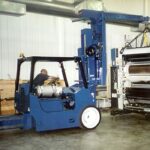In an age where electricity and refrigeration are as standard as running water, it’s easy to forget the old-world ingenuity required to keep food safe and edible for extended periods. Our ancestors, however, had some remarkable ways to preserve food. Let’s delve into the five standout methods they used, which not only stood the test of time but could also become vital survival skills during power outages, like during the 6 major disasters that caused massive blackouts.
Content
1. Smoking
Smoking is a method as old as time. By exposing food to smoke from a wood fire, our ancestors could effectively extend the shelf life of various meats. The smoke contains antimicrobial and antioxidant properties that slow down the growth of bacteria, preventing spoilage. This technique is brilliantly detailed in a comprehensive superfoods book, illustrating how you can use this method at home.
2. Fermentation
Fermentation is a chemical process where sugars and starches in food are converted to alcohol or organic acids by microbes. The resulting fermented foods can be stored for a long time without refrigeration and have the added benefit of being rich in probiotics. Classic examples include sauerkraut, kimchi, and yogurt.
3. Drying
Removing moisture from food is a great way to keep it from spoiling. Drying could be as simple as hanging strips of meat or fish in the sun or by a fire. With the water content drastically reduced, the food becomes inhospitable for bacteria growth.
4. Canning
Canning involves placing foods in jars or similar containers and heating them to a temperature that destroys micro-organisms. As the canned food cools, the heat forces out air and creates a seal, effectively preserving the food inside for an extended period.
5. Root Cellars
Our ancestors dug out root cellars, a type of underground room, to store their crops. These cellars leveraged the natural cooling, insulating properties of the earth to keep the food from spoiling. Even during the warmest months, the temperature inside a root cellar remains steady, keeping food fresh for longer.
These are some of the many ways our forebears managed to keep their food safe and edible without modern conveniences. Now, more than ever, these methods can serve as practical skills for survival, self-sufficiency, and perhaps even a journey into the past. If you’re interested in learning more about surviving without modern amenities, check out this guide on how to survive a week without electricity.
And for those who are curious to delve deeper into the old ways of food preservation, I recommend this superfoods book. It’s an enlightening read filled with techniques to help you take a step towards a self-reliant, resourceful life, even in the face of an unexpected crisis.
The Revival of Traditional Food Preservation
In recent years, we’ve seen a resurgence of these traditional food preservation methods. This revival isn’t just driven by survivalists or those aiming to live a self-reliant lifestyle. More and more, people are seeking to understand where their food comes from and how it’s processed. There’s a certain satisfaction in using age-old methods to preserve your own food, a tangible connection to the past that’s also a viable means of living a more sustainable lifestyle.
The Health Benefits of Traditional Food Preservation
There are also health benefits associated with these ancient preservation techniques. Fermentation, for example, produces beneficial probiotics that aid in digestion and support a healthy gut. Smoking meat not only adds a delicious flavor but can also help to retain nutrients that might otherwise be lost in other cooking processes. Canning, when done properly, can preserve the nutritional value of fresh produce and allow you to enjoy them out of season. So, in preserving food in these ways, we’re not just ensuring we have sustenance for the future – we’re also taking care of our health.
Taking It a Step Further: Growing Your Own Food
Going a step beyond preserving food, many people are also turning to gardening and farming as a way to become more self-reliant. Growing your own food is a gratifying process, and when coupled with traditional preservation techniques, it can provide you with a degree of self-sufficiency. It gives you control over what you eat, how it’s grown, and how it’s preserved. Combining food preservation with growing your own produce can make for a healthier, more sustainable lifestyle, connecting us back to our roots in a profoundly meaningful way.

Bradley attended Boston University where he received a Bachelor’s degree in Economics and Political Science as well as a Master’s degree in Business Administration from Columbia University Graduate School of Business (currently attending). He loves to write about everything business related.









